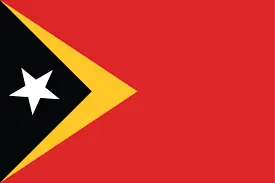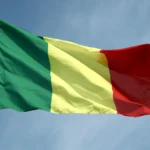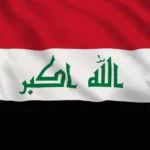
Nestled in the heart of Southeast Asia lies East Timor, a nation brimming with history, culture, and natural beauty. From its rugged mountains to its pristine coastlines, East Timor offers a tapestry of landscapes and experiences waiting to be discovered. Despite its small size, this young democracy boasts a rich heritage shaped by centuries of colonial rule, struggle for independence, and vibrant cultural traditions. Join us on a journey to explore the diverse facets of East Timor, from its resilient people to its unique wildlife, as we uncover the allure of this enchanting island nation.
Young nation: East Timor declared independence on May 20, 2002, marking its emergence as the world’s youngest democracy in Southeast Asia. This declaration followed centuries of colonial rule and a brutal occupation by Indonesia. The road to independence was paved with significant challenges, including violence, displacement, and loss of life. The achievement of independence symbolized a triumph of the Timorese people’s determination and resilience in the face of adversity, ushering in a new era of self-governance and nation-building.
Mountainous terrain: Nearly 80% of East Timor’s land area is characterized by rugged and mountainous terrain. Among its prominent peaks is Tatamailau, also known as Ramelau, which stands as the highest point in the country at 3,012 meters (9,883 ft) above sea level. The mountainous landscape not only shapes the country’s physical geography but also influences its climate, ecosystems, and socio-economic development. The challenging topography presents both opportunities and obstacles for agriculture, infrastructure development, and human settlement.
Island nation: East Timor occupies the eastern half of the island of Timor, sharing its landmass with Indonesia’s West Timor province. Additionally, the country encompasses several smaller islands, including Atauro Island and Jaco Island, as well as numerous islets scattered along its coastline. This insular geography contributes to East Timor’s distinct cultural identity and biodiversity, as each island supports unique ecosystems and communities. Despite its small size, the country’s maritime boundaries extend into the Timor Sea, where it shares resources and environmental concerns with neighboring nations.
Colonial history: East Timor’s colonial history traces back to the 16th century when Portuguese explorers first arrived on the island. For over three centuries, the territory remained under Portuguese rule, influencing its language, religion, and governance structures. However, Portugal’s presence waned in the 20th century, leading to increased unrest and calls for independence. In 1975, amid political instability, Portugal withdrew, setting the stage for East Timor’s tumultuous journey toward self-determination.
Indonesian occupation: Following Portugal’s departure, Indonesia invaded East Timor, claiming it as its 27th province. The subsequent occupation, which lasted nearly a quarter of a century, was marked by widespread human rights abuses, including forced displacement, torture, and extrajudicial killings. The Indonesian military’s brutal suppression of resistance movements fueled international condemnation and heightened calls for East Timor’s liberation.
Struggle for independence: The Timorese people’s resistance against Indonesian occupation was characterized by resilience, sacrifice, and perseverance. Despite facing overwhelming odds, various clandestine networks and guerilla fighters waged a protracted struggle for freedom. The resistance movement, led by figures like Xanana Gusmão and José Ramos-Horta, mobilized widespread support both domestically and internationally, amplifying calls for self-determination and human rights.
UN intervention: In 1999, escalating violence prompted international intervention, leading to the deployment of United Nations peacekeeping forces and the organization of a referendum on independence. The overwhelming majority of East Timorese voted in favor of separation from Indonesia, paving the way for the restoration of independence. The UN’s involvement played a crucial role in facilitating the transition to self-governance and providing support for rebuilding efforts in the aftermath of conflict.
First president: Xanana Gusmão, a prominent resistance leader, became East Timor’s first democratically elected president following independence in 2002. His leadership was instrumental in guiding the young nation through the challenges of state-building, reconciliation, and development. Gusmão’s tenure as president was characterized by efforts to foster national unity, strengthen democratic institutions, and promote socio-economic progress. His legacy as a statesman and peacemaker continues to resonate in East Timor’s political landscape.
Unique language landscape: East Timor boasts a diverse linguistic heritage, with Tetum and Portuguese recognized as its official languages. Tetum, an Austronesian language with Portuguese influence, serves as a lingua franca among different ethnic groups, facilitating communication and cultural exchange. Additionally, numerous indigenous Papuan languages are spoken throughout the country, reflecting its rich tapestry of linguistic diversity. Language plays a central role in shaping East Timorese identity, heritage, and collective memory.
Threatened species: The Timor pony, a small and resilient horse breed native to East Timor, faces the risk of extinction due to habitat loss, disease, and declining population numbers. Once an integral part of Timorese culture and agriculture, these ponies are now classified as endangered by the Food and Agriculture Organization (FAO). Efforts to conserve and protect the Timor pony, along with other endangered species endemic to the region, are essential for preserving East Timor’s natural heritage and biodiversity.
Low literacy rate: Despite efforts to improve education, East Timor continues to grapple with a low adult literacy rate, estimated to be around 50%. Historical factors such as limited access to quality education during colonial and conflict periods have contributed to this challenge. Addressing literacy gaps remains a priority for the government and international organizations, with initiatives focusing on expanding educational infrastructure, training teachers, and promoting literacy programs tailored to the needs of diverse communities.
Coffee production: Coffee cultivation is a significant economic activity in East Timor, with Arabica beans grown in the country’s mountainous regions renowned for their quality. Coffee production provides livelihoods for many rural communities and contributes to the country’s export revenue. Despite challenges such as fluctuating market prices and vulnerability to climate change, efforts to enhance coffee quality, promote sustainable farming practices, and access international markets are underway to support the growth of the coffee industry.
Marine biodiversity: East Timor’s coastal waters are characterized by rich marine biodiversity, including vibrant coral reefs, diverse fish species, marine mammals, and sea turtles. These ecosystems support local livelihoods, tourism, and cultural practices such as fishing and marine-based traditions. However, marine biodiversity faces threats from overfishing, habitat degradation, pollution, and climate change. Conservation efforts, including marine protected areas, sustainable fishing practices, and public awareness campaigns, are vital for safeguarding East Timor’s marine ecosystems for future generations.
Ningaloo shark sanctuary connection: The Timor-Leste Marine Sanctuary shares ecological connections with the Ningaloo Marine Park in Australia, forming part of a vast interconnected marine ecosystem spanning the Indian and Pacific Oceans. This connection underscores the importance of transboundary cooperation and conservation initiatives for protecting migratory species, maintaining ecosystem health, and fostering regional collaboration in marine conservation efforts. Scientific research and monitoring programs help identify shared conservation priorities and inform management strategies for sustaining marine biodiversity in both regions.
World’s youngest phylum: Laynites desmordii, a newly discovered marine worm phylum, was identified in the seabed off the coast of East Timor in 2013, making it the world’s youngest animal phylum. This groundbreaking discovery highlights the region’s significance for biodiversity research and underscores the importance of marine exploration and scientific collaboration in uncovering new species and understanding evolutionary processes. The identification of Laynites desmordii contributes to global efforts to catalog and conserve Earth’s biodiversity for scientific knowledge and ecosystem preservation.
High poverty rate: Despite economic progress in recent years, East Timor remains one of the poorest countries in Southeast Asia, with a GDP per capita of around $1,800 (PPP). Poverty is entrenched in many rural and urban communities, exacerbated by factors such as limited access to basic services, employment opportunities, and social infrastructure. Addressing poverty requires comprehensive strategies that prioritize inclusive economic growth, social protection, access to education and healthcare, and sustainable development initiatives aimed at reducing inequalities and improving living standards for all citizens.
Reliance on oil: East Timor possesses significant petroleum resources in the Timor Sea, which have played a crucial role in the country’s economy and government revenue. However, heavy reliance on oil revenues exposes East Timor to volatility in global oil markets and underscores the importance of diversifying the economy to reduce dependence on finite natural resources. Efforts to manage oil revenues responsibly, invest in infrastructure and human capital, promote private sector development, and explore alternative sources of income are essential for ensuring long-term economic stability and sustainability.
Educated youth: East Timor’s younger generation is increasingly pursuing higher education opportunities, both domestically and abroad, as part of efforts to acquire knowledge, skills, and qualifications for future employment and leadership roles. Access to education has expanded since independence, with investments in school infrastructure, teacher training, and scholarship programs. However, challenges such as limited educational resources, quality assurance, and employment prospects persist, requiring continued efforts to strengthen the education system and align curricula with market demands and national development priorities.
Strong cultural identity: East Timorese culture is characterized by a rich tapestry of traditions, customs, and practices that reflect its diverse ethnic, linguistic, and historical heritage. Music, dance, storytelling, and ceremonial rituals play an integral role in community life, fostering a sense of belonging and identity among the population. Cultural expressions often intersect with social, religious, and political dimensions, serving as a means of resistance, resilience, and solidarity in the face of adversity. Efforts to preserve and promote East Timor’s cultural heritage contribute to nation-building, social cohesion, and intergenerational transmission of knowledge and values.
Vibrant celebrations: Festivals and celebrations hold special significance in East Timorese culture, serving as occasions for communal gatherings, religious observance, and cultural expression. Events such as Independia (Independence Day) and Easter are marked with enthusiasm, patriotism, and colorful displays of traditional costumes, music, and dance. These festivities provide opportunities for people to come together, celebrate shared history and values, and reaffirm national identity and aspirations. Cultural festivals also attract tourists and showcase East Timor’s cultural diversity, creativity, and hospitality on the global stage.
Developing infrastructure: East Timor is actively investing in infrastructure development to enhance connectivity, facilitate economic growth, and improve quality of life for its citizens. Projects include the construction of roads, bridges, ports, airports, and telecommunications networks, aimed at reducing transportation barriers, promoting trade and commerce, and expanding access to essential services across urban and rural areas. Infrastructure development initiatives play a critical role in laying the foundations for sustainable development, fostering social inclusion, and unlocking the country’s potential for economic diversification and resilience.
Ecotourism potential: The government of East Timor is promoting ecotourism initiatives to capitalize on the country’s natural beauty, cultural heritage, and biodiversity. With its pristine landscapes, diverse ecosystems, and unique wildlife, East Timor offers opportunities for nature-based tourism, adventure travel, and cultural immersion experiences. Ecotourism projects prioritize sustainable practices, community involvement, and environmental conservation, aiming to generate income, create employment, and support local livelihoods while preserving natural resources and promoting cultural appreciation and exchange.
Growing tourism industry: East Timor’s tourism sector is experiencing steady growth, fueled by increasing interest from domestic and international travelers seeking authentic and off-the-beaten-path destinations. Visitors are drawn to the country’s unspoiled beaches, lush forests, historical sites, and vibrant cultural traditions. Despite challenges such as limited tourism infrastructure, accessibility issues, and perceptions of safety, efforts to promote East Timor as a tourist destination are yielding positive results. Tourism development strategies focus on enhancing visitor experiences, improving hospitality services, and showcasing the country’s unique attractions and cultural heritage to a global audience.
Martial arts tradition: Pende is a traditional martial art practiced by the Timorese people, combining self-defense techniques with cultural elements such as music, dance, and storytelling. Rooted in centuries-old traditions, Pende serves as a means of preserving cultural identity, fostering discipline, and promoting physical fitness among practitioners. The art form reflects Timorese values of community, resilience, and solidarity, with techniques passed down through generations and practiced in various contexts, including festivals, ceremonies, and social gatherings.
Unique weaving: Tai Loran is a distinctive textile woven by Timorese women, characterized by intricate geometric patterns, vibrant colors, and cultural symbolism. Traditionally crafted using backstrap looms and natural fibers, Tai Loran serves as both a practical garment and a symbol of cultural identity and heritage. Each pattern and motif carries meanings related to family, status, and community, with weaving techniques passed down from mothers to daughters. Tai Loran textiles are treasured as heirlooms, exchanged during important life events, and worn with pride to showcase Timorese craftsmanship and tradition.
Second smallest Southeast Asian nation: With a total land area of 14,807 square kilometers (5,717 sq mi), East Timor is the second-smallest country in Southeast Asia, after Singapore. Despite its small size, the country boasts diverse landscapes, from rugged mountains and dense forests to pristine coastlines and coral reefs. Its compact size facilitates travel and exploration, allowing visitors to experience a variety of natural and cultural attractions within a relatively small geographical area.
Cristo Rei of Dili: The Cristo Rei of Dili is an iconic statue situated atop a hill overlooking the capital city of Dili. Standing at 27.2 meters (89 ft) tall, the statue depicts Jesus Christ with outstretched arms, reminiscent of the Christ the Redeemer statue in Rio de Janeiro, Brazil. A symbol of faith and spirituality, the Cristo Rei attracts pilgrims, tourists, and locals alike, offering panoramic views of Dili and the surrounding coastline. The monument serves as a cultural landmark and a testament to East Timor’s strong Catholic heritage and religious devotion.
Ninety-nine percent Catholic: East Timor has the highest percentage of Catholics in Southeast Asia, with approximately 98.3% of the population adhering to the Catholic faith. Catholicism holds significant cultural and social influence in the country, shaping religious practices, values, and community life. Churches, cathedrals, and religious festivals play central roles in East Timorese society, fostering spiritual connections, social cohesion, and moral guidance. The Catholic Church also contributes to education, healthcare, and social services, serving as a pillar of support for many communities across the nation.
Unique wildlife: East Timor is home to diverse and unique wildlife, including endemic species found nowhere else in the world. Among its notable inhabitants is the Timor tree rat, a large rodent species distinguished by its long hair and arboreal habits. Endemic to the island of Timor, the Timor tree rat occupies forested habitats and plays ecological roles as a seed disperser and prey species. Conservation efforts are underway to protect the Timor tree rat and other endemic wildlife from threats such as habitat loss, invasive species, and human activities.
Upcoming ASEAN chair: East Timor is poised to assume the chairmanship of the Association of Southeast Asian Nations (ASEAN) in 2026, marking a significant milestone in its regional diplomacy and integration efforts. As the newest member of ASEAN, East Timor seeks to strengthen its engagement with neighboring countries, promote regional cooperation, and contribute to ASEAN’s goals of peace, stability, and prosperity in Southeast Asia. The chairmanship provides East Timor with opportunities to showcase its capabilities, advance its national interests, and play a constructive role in shaping regional agendas and initiatives.
Here are some FAQs regarding East Timor:
What is the history of East Timor in a nutshell?
East Timor’s history is marked by colonization and struggle for independence. Portugal colonized the eastern half of Timor island in the 16th century, leaving a lasting influence on language and culture. Following Portugal’s withdrawal in 1975, Indonesia invaded and occupied East Timor for nearly 25 years. A brutal resistance movement by the Timorese people resulted in a significant loss of life. With UN intervention in 1999, a referendum overwhelmingly supported independence, leading to the official declaration in 2002.
What are the official languages of East Timor?
East Timor has two official languages: Tetum and Portuguese. Tetum, an Austronesian language with Portuguese influence, is widely spoken by the majority of the population. Portuguese, a legacy of colonization, is spoken by a smaller percentage but remains an official language for government and education purposes. Additionally, many indigenous Papuan languages are spoken throughout the country, reflecting the rich linguistic diversity of Timor-Leste.
What is East Timor’s economy like?
Despite significant progress, East Timor remains one of the poorest countries in Southeast Asia. The economy relies heavily on petroleum resources in the Timor Sea, which contributes a large portion of government revenue. Coffee production, particularly Arabica beans grown in the highlands, is another important export. The government is focusing on developing other sectors like tourism, especially ecotourism, to diversify the economy and create sustainable growth.
What is the culture of East Timor like?
Timorese culture is rich in tradition and deeply intertwined with community life. Music, dance, and weaving hold significant importance, with unique styles and practices passed down through generations. Religious festivals like Easter and Independia (Independence Day) are vibrant celebrations showcasing cultural expression. The country also boasts a strong martial arts tradition with Pende, a unique art form combining self-defense and cultural performance.
What are some interesting tourist attractions in East Timor?
Timor-Leste offers a variety of attractions for adventurous tourists. The stunning natural beauty includes pristine beaches, dramatic mountains like Tatamailau, and coral reefs teeming with marine life. Visitors can explore historical sites like the Cristo Rei statue overlooking Dili or delve into the rich cultural heritage through museums and traditional villages. The developing ecotourism sector allows responsible travel experiences that connect visitors with the natural environment and local communities.









